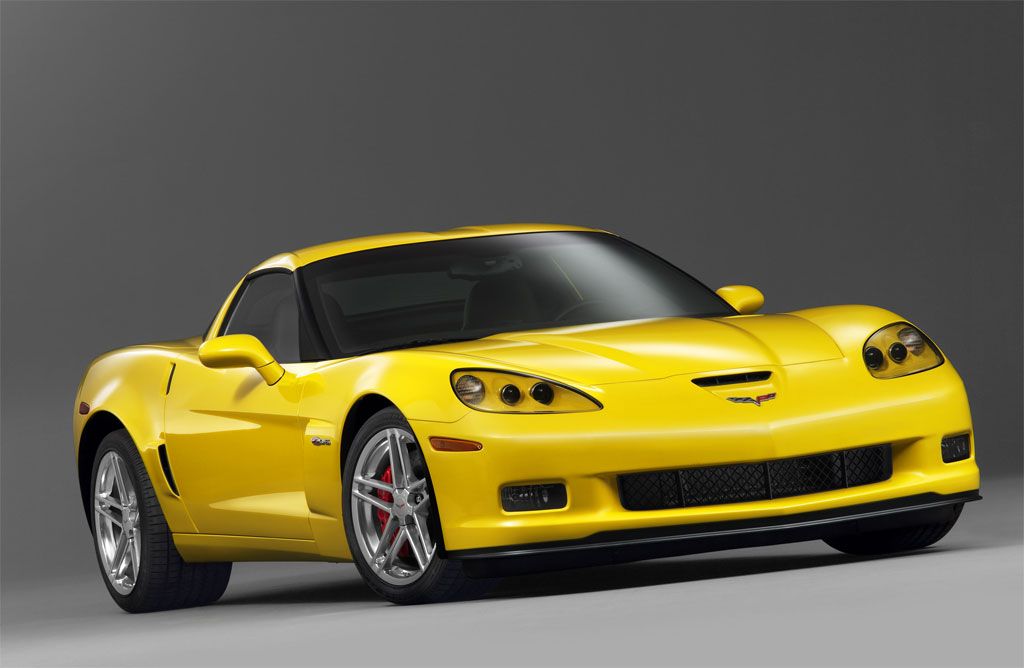The piston assembly for the 2006 Corvette Z06 LS7 7.0-liter V-8 engine is one of the latest examples of race designs carrying over to production GM engines. Almost every aspect of the short skirt, high strength pistons and titanium connecting rods used in the 505 horsepower power plant is developed through race design know-how.
Thanks to racing experience GM engineers have brought one of the most advanced design piston and rod assemblies to a production engine. “Besides light-weight, the LS7 piston assembly has an abundance of features built-in through race experience,” said Roger Duguay, chief engineer for GM small block engines. “Full floating pistons with valve reliefs and lightening pockets, plasma moly rings, tapered wall pins, high strength chromium nitrided titanium rods just begin to highlight the racing DNA of this assembly.”
The full-floating piston is made of eutectic aluminum alloy and is CNC machined for balance and tolerance consistency. For durability the top land is anodized. Between the first and second ring lands is a pressure balance groove, another racing carry-over, to control blow-by and oil consumption at high speed. Piston tops are flat with symmetrical valve reliefs providing opportunities for a stroker crank or higher lift. A polymer coating on the skirts to reduce scuffing creates an almost negative interference fit in the bore.
The ring pack uses thin rings for high speed sealing control. A 1.2 mm top compression ring is used with a plasma moly face for superior sealing and durability. The second compression ring is also 1.2 mm thick and is made of ductile or high strength iron. The three-piece oil control ring is 2.0 mm thick and is made of nitrided steel for superior wear control and spring force longevity. Nitriding also enables lower ring tension resulting in more power due to reduced friction.
Little was spared when it came to developing the connecting rods. The rod is made of a titanium aerospace alloy and uses twelve-point doweled cap screws. The rods are heat treated and have a chromium nitride coating for surface durability. The coating is applied to the thrust facing areas via plasma vapor deposition (PVD) – a process taking 12 hours to apply. Each rod has three weight pads for precise balance. Blind holes are used, to eliminate stress areas, in conjunction with a heat treated style cap screw with a neck down shank for consistent clamp and controlled stretch. The LS7 rod weighs just 464 grams which is almost 30 percent lighter than the similar forged powder metal rod in the base engine Corvette.
Racing has always been on the forefront of reducing component weight. “Racing knowledge transfer gave us the basic design elements for the LS7 piston assembly,” said Tom Halka, development engineer for GM small block engines. “Thanks to GM’s vast technical resources and racing background we now have a light, high speed assembly that balances reliability and durability with performance. What we learned with this assembly we will apply to other GM engine programs.”
General Motors Corp. (NYSE: GM), the world’s largest automaker, has been the global industry sales leader for 75 years. Founded in 1908, GM today employs about 327,000 people around the world. With global headquarters in Detroit, GM manufactures its cars and trucks in 33 countries. In 2005, 9.17 million GM cars and trucks were sold globally under the following brands: Buick, Cadillac, Chevrolet, GMC, GM Daewoo, Holden, HUMMER, Opel, Pontiac, Saab, Saturn and Vauxhall. GM operates one of the world’s leading finance companies, GMAC Financial Services, which offers automotive, residential and commercial financing and insurance. GM’s OnStar subsidiary is the industry leader in vehicle safety, security and information services.
Specifications
Engine
- Type: 7.0-liter (427.7 cu . In.) OHV V8 LS7 for the 2006 Corvette Z06
- Horsepower: 505 (377 kW) @ 6300 rpm (SAE certified )
- Torque: 470 lb.-ft. (637 Nm) @ 4800 rpm (SAE certified)
- Bore x stroke: 4.125 in. x 4.00 in. ( 104.8 mm x 101.6 mm)
- Compression ratio: 11.0 :1
- Fuel shutoff: 7100 rpm
Piston
- Type: Flat top, short skirt, with valve reliefs and lightening pockets, anodized top land, second land with pressure balance groove
- Material: High strength aluminum alloy, T-7 heat treat, polymer coated skirts
- Compression height:30 mm
- Weight: 482 grams
- Piston-to-valve clearance: Intake: 8 mm Exhaust: 7 mm
Piston pin
- Type: Full floating, taper wall
- Material: High strength steel alloy, nitrided
- Length / diameter: 58 mm / 23.5 mm
- Weight: 132 grams
- Retainer: Round wire ring, chrome silicon steel
Piston rings
- Top compression: 1.2 mm (.0472 in.) symmetrical barrel face and twisted, plasma moly coated
- Second compression: 1.2 mm (.0472 in.) high strength ductile iron, taper face napier style
- Oil control: 2.0 (.0787 in.) mm stainless nitrided steel, three piece, low tension
Connecting Rod
- Type: Forged I beam, stepped down pin end, blind cap hole, alignment sleeve
- Material: Titanium aerospace alloy
- Center to center length: 154.1 mm
- Bolts: 12 point cap screw, heat treated, high strength steel alloy, necked down shank
- Weight:464 grams
- Rod Length-to-Stroke: 1.5:1

